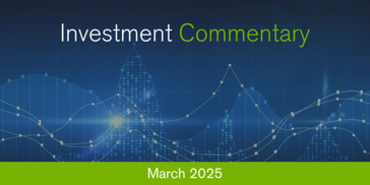Value vs Growth: Don’t time the cycle, but be aware of your downside

In the US, and more globally, growth has been the standout equity style bias from a performance perspective. Despite numerous false starts value has tried to stage a comeback, only to falter after a few months. In this article we discuss how its important for investors to focus on the underlying make-up of their equity allocation as they enter 2018.
Many investors have typically been passively exposed to the S&P500, which has been the optimal approach to position US equity portfolios. We argue that looking to switch some of this exposure into active managers with a slight value bias can improve risk-adjusted returns through potentially higher expected returns and better downside protection.
The recovery since the Financial Crisis of 2007 has been anything other than textbook. Persistently low interest rates have given rise to persistently low global government bond yields, which has hindered the ability of investors to accurately assess where we are in the business cycle. Whilst fixed income investors have struggled to forecast the return on bonds, equity investors have been able to ride a clear winner over this period. ‘Growth’ investing has been one particular factor (or investment style) that has steadily outperformed its ‘Value’ investing sibling. Using the MSCI World Value and Growth indices as proxies, the outperformance since 2007 has been around 53% (in USD, total return terms).
Fast forward to 2018 and the majority of long-only investors have seen strong performance from their equity portfolios. Indeed last year even saw some active managers outperform their passive rivals. If low interest rates had been keeping equity markets buoyant in the immediate aftermath of the crisis, stronger (and synchronised) global economic growth has taken over as the key driver. ‘Growth’ investing as a style hugely outperformed ‘Value’ in 2017, and there were particular sectors and companies more aligned to the ‘Growth’ style which contributed heavily. Take for example the case of the US equity market, the S&P500, which generated a total return of 21.3% in 2017. Information Technology (IT) as a sector within this index contributed around 40% of these returns, despite only having an index weight of 21% at the start of the year.
Whilst IT should not be considered as the only example of a ‘Growth’ industry, it’s proliferation across the globe should not be ignored. Whilst developed equity markets produced strong returns in 2017, the pick-up in global trade and wider economic growth also propelled emerging and Asian equity markets materially higher last year. Yet a closer look at the sector breakdown in those markets reveals that both indices (as measured by MSCI Emerging Markets and MSCI Asia Pacific ex Japan) have a high weighting to IT – both around 30%. The concentration of equity returns in this part of the world are even greater, where only three companies – Baidu, AliBaba and Tencent (known as BAT) have driven performance in the sector.
As a result, multi-asset portfolios that have generated returns from equity markets in those regions of the world will need to carefully consider how they position portfolios in 2018. The prudent investor would typically aim to rebalance away from the high performers towards the pockets of relative value opportunities. This doesn’t mean trying to time the business cycle, far from it. With valuations running at multi-year highs across all asset classes, the prudent investor is far more interested in protecting his portfolio’s downside deviation. ‘Value’ as an equity investing style presents one such opportunity. Industries that are more cyclical in nature could be considered to have a value tilt – these include the financial, industrial and energy sectors.
Of course ‘Value’ has had a more recent renaissance, only to fizzle out after one quarter. Famously this was in the fourth quarter of 2016 following Donald Trump’s election as US President. With promises of higher spending in the US, cyclically sensitive industries enjoyed a temporary boost in sentiment while government bond yields and inflation expectations moved higher as the reflation trade kicked in. The traction could not be maintained into 2017. Government bond yields were more volatile but finished the year broadly where they started while inflation remains the dog that hasn’t barked. The rest, as they say, is history.
At Thomas Miller Investment, the multi-asset portfolios are constantly looking to be prudent – this year that means looking for opportunities to switch some of the equity ‘Growth’ exposure into a more ‘Value’ orientated option. This is not our call for 2018, as long-term preservers of capital for our clients our investment process does not lend itself to making “the call”. As defensively minded investors we do see an opportunity to take some profit from a style that has performed well and rotate. In the US equity market, one such fund that we find attractive is the JP Morgan US Equity Income fund managed by Clare Hart. With an income orientated approach the fund is overweight financials, industrials and energy sectors. Whilst not deliberate, the fund’s investment approach results in a portfolio that generates strong downside protection. When blended with the slightly more ‘Growth’-like S&P500 index, investors can build an equity portfolio that should be more resilient in 2018.
Jordan Sriharan
Head of Fund Research and Senior Portfolio Manager
Article first appeared in:
Trustnet (on the 17th January 2018)
Opinions, interpretations and conclusions expressed in this document represent our judgement as of this date and are subject to change. Furthermore, the content is not intended to be relied upon as a forecast, research or investment advice, and is not a recommendation, offer or a solicitation to buy or sell any securities or to adopt any investment strategy.
Thomas Miller Investment is the trading name of the businesses in the Thomas Miller Investment Group. This note has been issued by Thomas Miller Wealth Management Limited which is authorised and regulated by the Financial Conduct Authority (Financial Services Register Number 594155) and is a company registered in England, number 08284862.
- Date
- 17/01/2018





